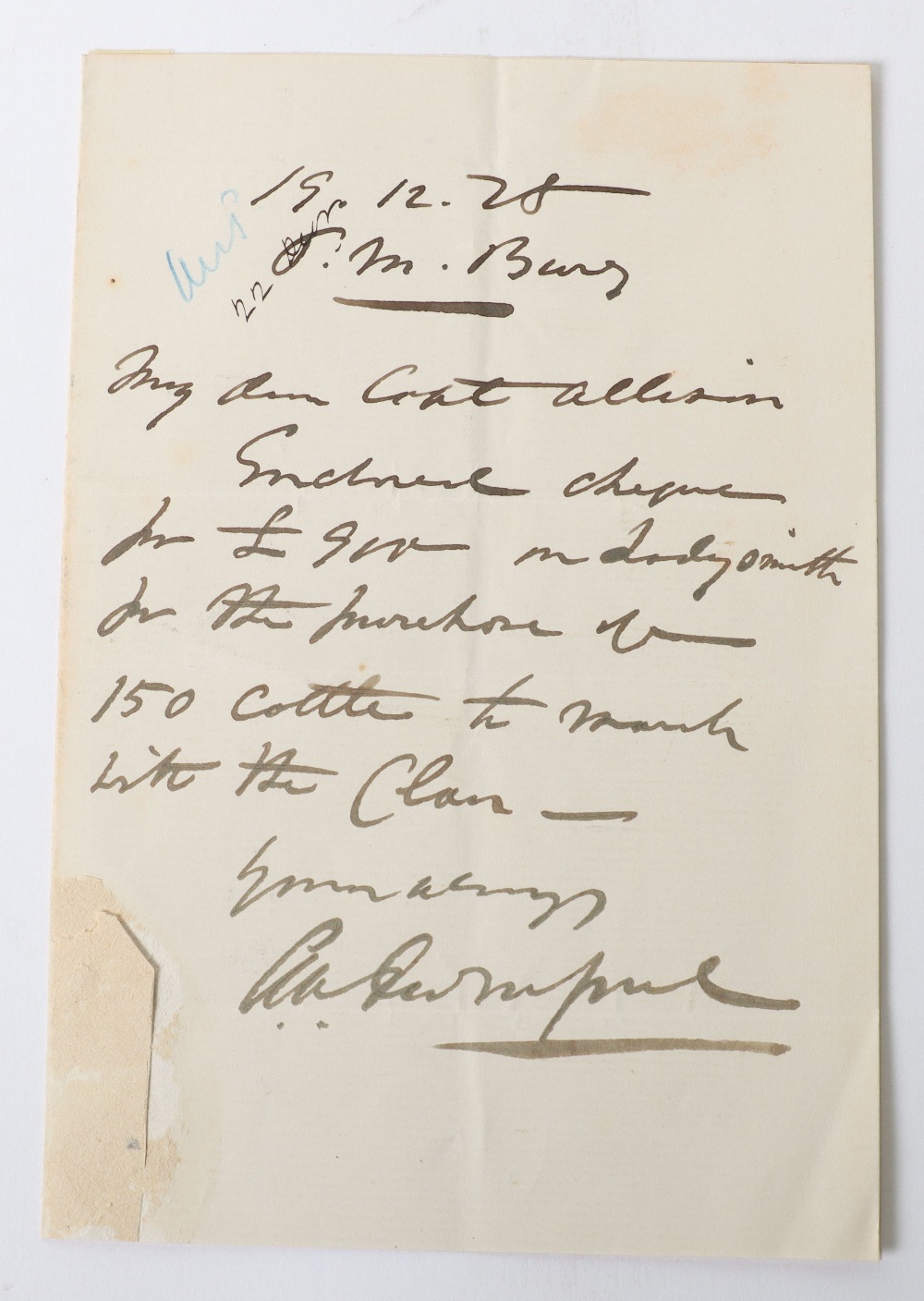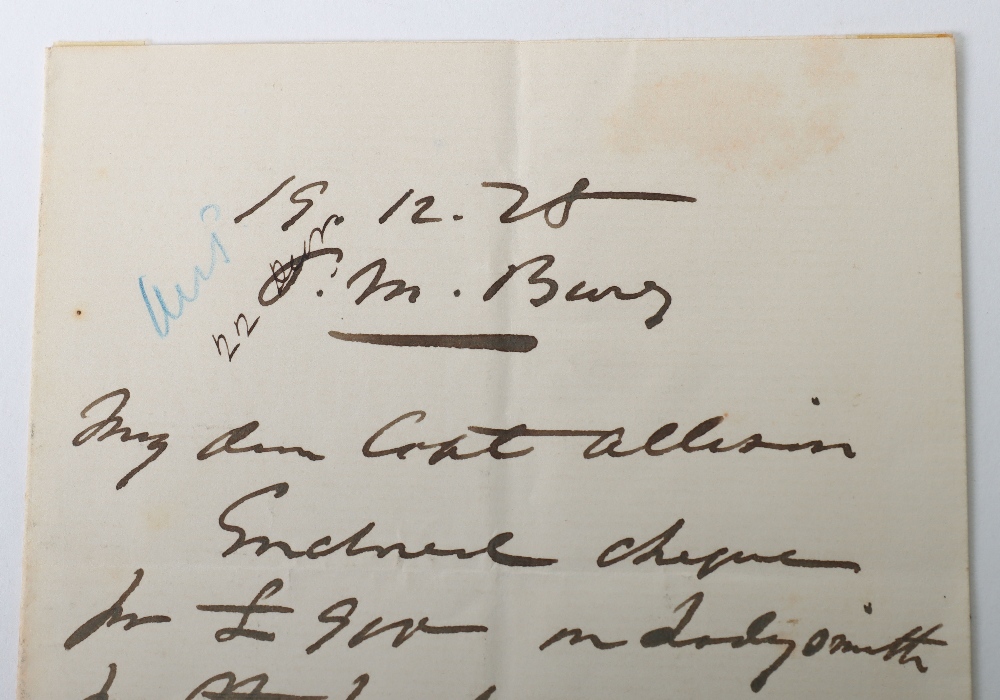456
Rare Hand Written Signed Letter from Lieutenant-Colonel Anthony William Durnford, Who Was Killed in
Second Chance July Fine Militaria Auction
Ends from
Venue Address
- C&T Auctioneers and Valuers Ltd offer an in house post and packing service for most auctions unless advertised.
- Sorry We Do Not offer In House Post our Packing for our specialist Toy Soldiers and Figures Actions, we can recommend Mailboxes Tunbridge Wells or Jentel Packing.
- We are not able to offer in house post and packing on invoice totals over £3,000 or very fragile, large or heavy items. These items will also need to be shipped by specialist shippers.
- POST BREXIT NOTICE FOR EU BUYERS SHIPPING PURCHASED LOTS OUTSIDE THE UK:From the 1st of January 2021 all sales from the UK to EU customers will be treated as exports. These can be zero rated for UK VAT purposes, as currently applied for non-EU countries. But, items depending on their value and nature, may become liable to import VAT (and customs duty where applicable) when entering the EU (This is the responsibility of the buyer).
Please contact our office 01233 510050 for further information.
- PLEASE NOTE DUE TO NEW RESTRICTIONS, ALL PURCHASERS OF ANY EDGED WEAPON WILL NEED TO PROVIDE US WITH PROOF OF AGE (OVER 18) BEFORE THE ITEM CAN BE SHIPPED.
- ALL LOTS WITH ^ PREFIX CONTAIN IVORY OR ANOTHER PROPERTY THAT WILL REQUIRE CITES LICENSE BEFORE BEING SHIPPED OUTSIDE OF THE EU. PLEASE MAKE SURE YOU CAN LEGALLY IMPORT INTO YOUR COUNTRY OF RESIDENCE ANY ITEM BEFORE BIDDING IN THE AUCTION.
- ANTIQUE FIRE ARMS CAN NOT BE SHIPPED OUTSIDE OF THE UK
C&T Auctioneers and Valuers are not responsible for any damage caused when items are in transit with postal or courier firms. We are also not responsible for any package sent either by ourselves or any third party company which is lost in transit.
For lots we are not able to offer in house shipping;
We can recommend the following companies for shipping, who will be happy to quote and pick up:
MailBoxes TunbridgeWells
t: 01892510155
Email:greg@mbetunbridgewells.co.uk
Jentel Packing
t: 01268 776777
Email: enquiries@jentelpacking.co.uk
Collections
Coronavirus (COVID-19)
• After the auction lot(s) can only be collected from our office, by appointment only and must be paid for in full, prior to your arrival, with social distancing consideration in place
C & T Auctioneers and Valuers Ltd
Unit 4 High House Business Park
Kenardington
Nr Ashford Kent TN26 2LF.
Tel: 01233510050
PLEASE READ OUR TERMS AND CONDITIONS BEFORE BIDDING THANK YOU.
Important Information
This auction is a Timed Format auction only with bidding only available via the-saleroom.com
Terms & Conditions
UK:All items are sold under the auctioneers margin scheme.
From the 1st of January 2021 all sales from the UK to EU customers will be treated as exports. These can be zero rated for UK VAT purposes, as currently applied for non-EU countries. But, items depending on their value and nature, may become liable to import VAT (and customs duty where applicable) when entering the EU (This is the responsibility of the buyer).









